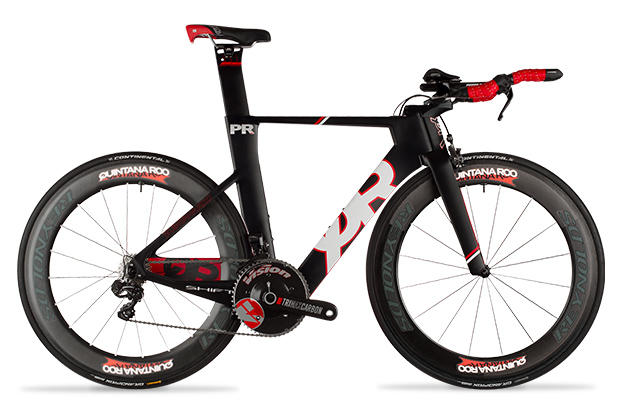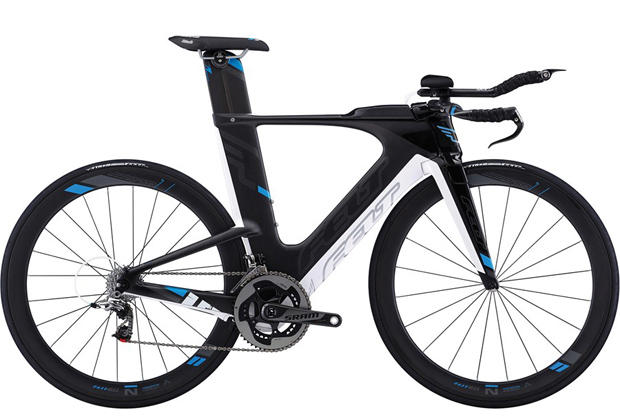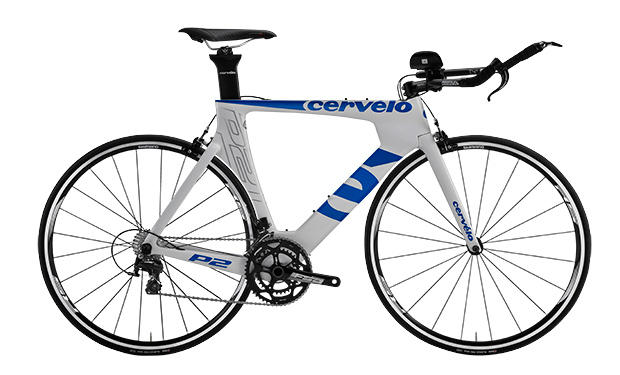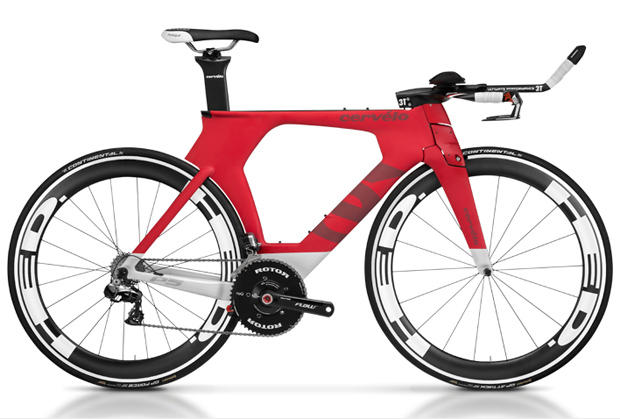Looking for a Tri Bike?
First let's just talk about how you you might choose your next tri bike. I get the sense a lot of you have only vaguely established your imperatives, and I'd like to refer back to these imperatives during the next month or two as I write about one bike versus another, one component group versus another.
How do you choose a bike? How should you choose a bike? By what process?

I wrote about imperatives. Here's an entire list of them and maybe I've even left some out:
– How does it fit?
– Is it likely to be comfortable in its native configuration?
– How will it handle?
– Is it structurally sound?
– How fast is it, that is, how aerodynamic and how light?
– Does it fit into my budget?
– Is it a good or bad value compared to those in its competitive set?
– Can I, and do I need to, build and maintain it?
– Will it be legal in the races you want to do?
– How user-friendly is it for traveling?
– How obtainable and desirable are its appendage parts? (seat post, wheels, tires).
– Is it visually appealing?
– Length of the warranty.
– Does it have the drivetrain and shift system I prefer?
– Are the parts going to be available for as long as I own this bike?
– Is the transaction safe?
– Will the company stand behind the product?
– Will buying this bike support my LBS?
Above are 18 imperatives. How would I rank them in importance?
Would any bike run that gauntlet? Sure! Plenty of good options, and I'll show you how I would approach it.
If it's me, very first thing is I narrow the list through the bikes that fit me. This is the toughest part, because it's not easy to do this yourself… unless you know how to do this yourself. I'm going to devote several installments on how I would go about this, using me as the victim, er, the subject! You'll be happy to know this is a very solvable problem (the first installments you'll find in the "related articles" section just below).

Once I had a list of bikes that would work for me fit-wise, I'd ask myself which of these bikes I thought offered comfort and handling. I'll devote another article just to that. But, in way of explanation, by "native configuration" (see the second imperative from the top) I'm referring to the aerobars, extensions, shifters and so forth that come on that bike (if it's sold as a complete bike). I either need to be comfortable on that bike as it's built – I need to like those aerobars and extensions – or if not am I willing and can I even change that config to suit me? Some of that depends on whether the bike is a mortal or super bike. Some superbikes are not capable of accepting a different front end than what comes on the bike.
Then I want to know whether it handles. Part of that is the bike's geometry. Part of it is the pursuit position. Some bikes geometrically are fine. Better than fine. They handle great. But, not with the pursuit bars that come with that bike. So, change the pursuit bars! Well, maybe I can't depending on whether it's a superbike or not. I need to be okay in the pursuits because, while I'm almost never there when I am there it's probably because I'm doing something kind of dicey, like cornering, descending, braking.
Whether the bike is a Trek or a DengFu, I want to make sure the bike is structurally sound. A fairly sizable number of our readers are opting for the Chinese "open mold," that is, an unbranded bike. I would not assume these bikes are unsound. I wouldn't assume anything. Of any bike. Any bike might break. Certain products make for a bad crash. Fork steerers, for example. Stems. I'll devote another article to that question of how to minimize the chance of a crash because of the failure of a critical part. Suffice it to say I would perform my due diligence to ensure I had the very best chance of that bike not breaking while I'm aboard it.
As of now, I've taken care everything immediately below:
– How does it fit?
– Is it likely to be comfortable in its native configuration?
– How will it handle?
– Is it structurally sound?
Then there are the performance elements of the bike, and we'll talk about these elements in due time:
– How fast is it, that is, how aerodynamic and how light?
– Will it be legal in the races you want to do?

Then there's the transactional elements of the deal, a number of which are values-based rather than binary yes/no choices. I just tell myself the truth about the questions below, and then I listen to my gut:
– Does it fit into my budget?
– Is it a good or bad value compared to those in its competitive set?
– Length of the warranty.
– Is the transaction safe?
– Will the company stand behind the product?
– Will buying this bike support my LBS?
Then we might to ask about the maintenance, near and long term, and whether I'm equipped for, and willing to, deal with a bike that might not be straightforward to travel with, fix, adjust and maintain. These are, or can be, real concerns. I absolutely will eschew a certain bike based on certain of these elements below:
– Can I, and do I need to, build and maintain it?
– How user-friendly is it for traveling?
– How obtainable and desirable are its appendage parts? (seat post, wheels, tires).
– Are the parts going to be available for as long as I own this bike?
And then the wild card:
– Is it visually appealing?
We, here at the Slowtwitch Compound, have a lot of bikes. We also have on the property a number of horses. Which we ride. Two things we've learned about horses, from experience: You can't ride the papers, and you don't ride the color. The papers, that's another story. As to the color, the point is: the horse's qualities or lack thereof will overcome whatever value you initially place in the color of his coat. I love grays, buckskins and grullas, but I'd prefer the garden variety bay if he's durable and he's got bottom. But you're the one who's got to ride whatever bike you decide to buy. What's important to you is yours to decide.






Start the discussion at forum.slowtwitch.com